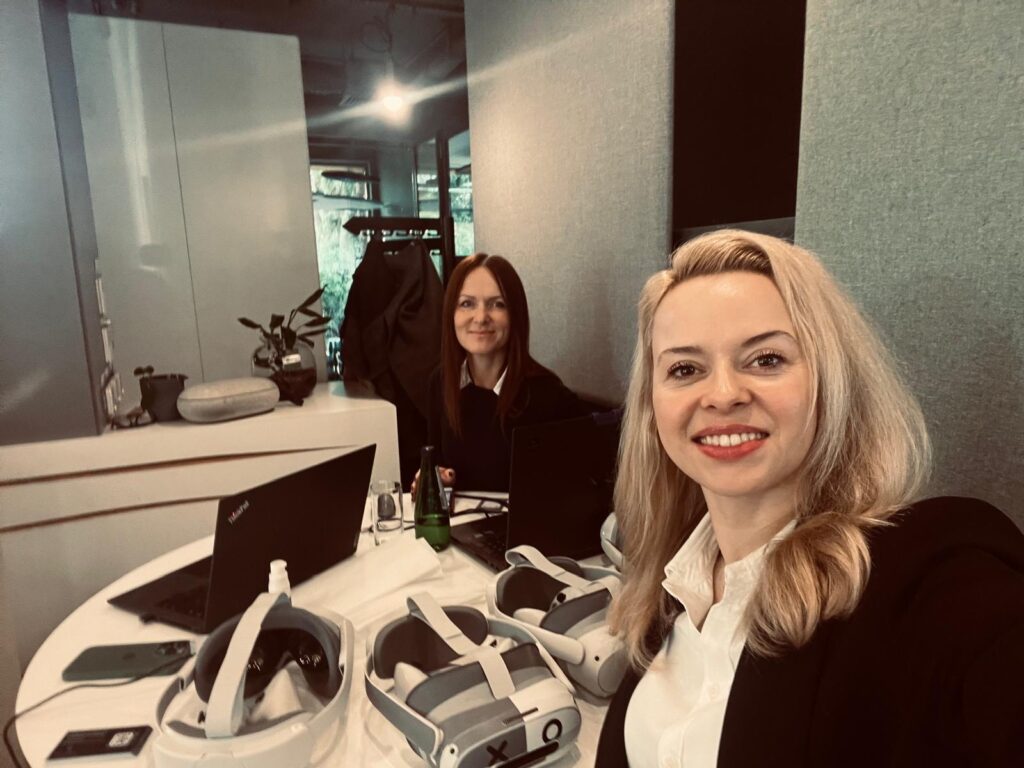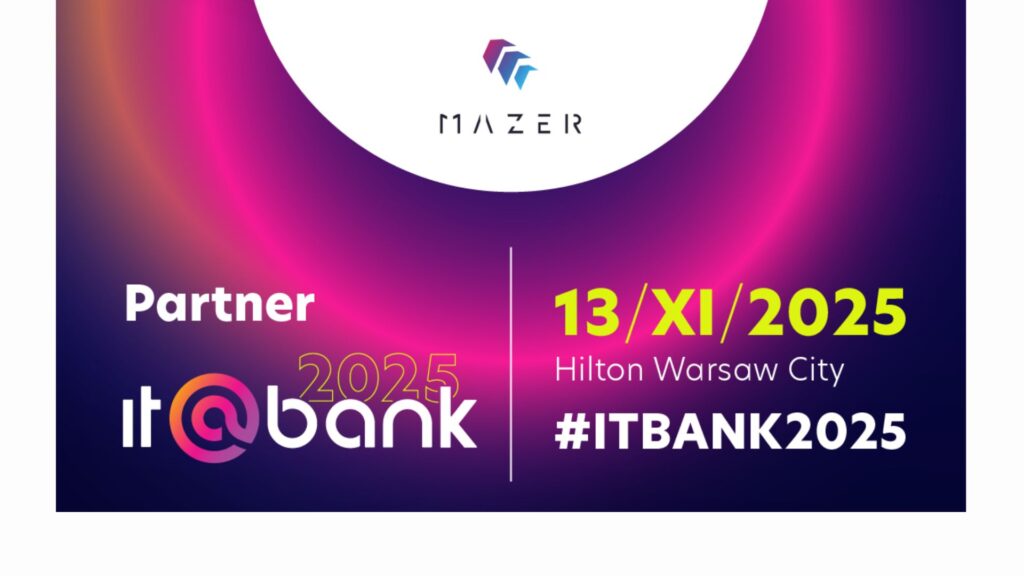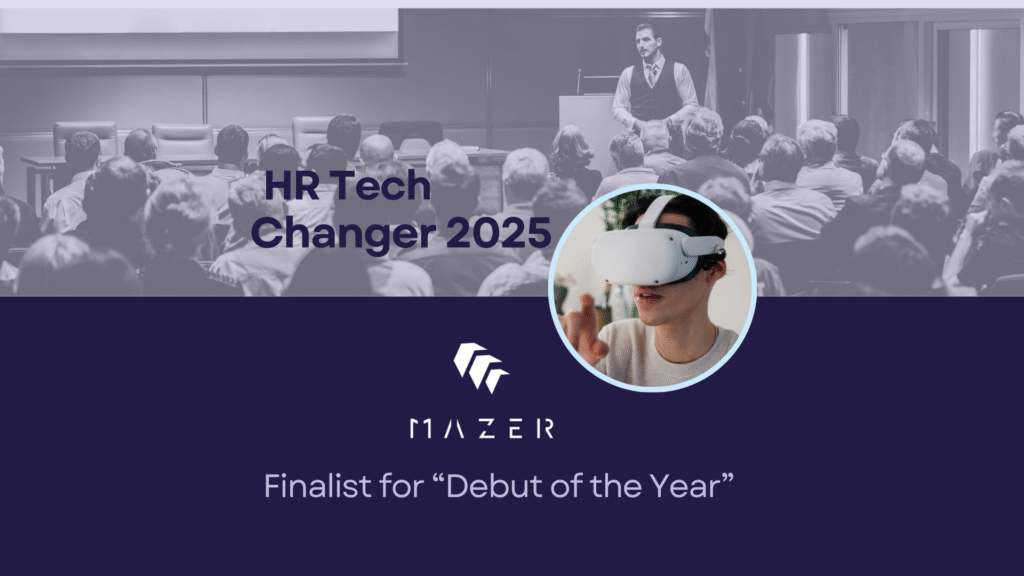How Enterprises Can Improve Business Efficiency with VR Training
Table of Contents:
Key Points
- Virtual Reality (VR) training significantly reduces training time and improves knowledge retention, leading to enhanced employee performance and safety.
- Companies like Walmart and UPS have reported substantial productivity savings and improved employee satisfaction through the implementation of VR training.
- VR training offers scalability and cost reduction benefits, allowing organizations to train large workforces efficiently without the constraints of traditional methods.
Enterprise efficiency isn’t just about optimizing processes; it’s about empowering your workforce to perform at its highest level while minimizing costs, errors, and risks. Virtual Reality training delivers quantifiable returns across every key performance metric: reduced training time, superior knowledge retention, lower operational costs, enhanced safety, and accelerated time-to-productivity.
The ROI Case
Studies consistently demonstrate that VR training delivers superior ROI compared to traditional methods when deployed at enterprise scale. According to PwC research, VR training achieves cost parity with classroom instruction at 375 learners, matches e-learning costs at 1,950 learners, and delivers greater cost-effectiveness at 3,000 or more employees.
Walmart deployed VR training across 4,700 locations, reaching 50,000 employees, reducing training time by 96%, from 8 hours to 15 minutes for specific modules. This resulted in millions of dollars in productivity savings, while improving employee satisfaction by 30% and post-training assessment scores by 12.5%. UPS achieved a 75% reduction in training time (from 8 hours to 2 hours) through VR driver simulations, resulting in fewer accidents and improved performance.
Efficiency Gain: Training Time Reduction
VR training compresses learning timelines compared to traditional methods, enabling employees to achieve full productivity more quickly. This acceleration occurs because immersive learning engages multiple senses simultaneously, creating stronger neural pathways. Boeing reduced assembly technician training time by 75%. VR eliminates logistical overhead (travel, scheduling, facility costs) and increases focus. VR trainees are 4 times more focused than e-learning participants.
Efficiency Gain: Knowledge Retention
Employees typically forget 90% of the material they have traditionally learned within a month. VR training inverts this equation; employees retain a large majority of the knowledge they acquire even after a year. This improvement eliminates costly retraining cycles and reduces errors caused by forgotten procedures.
Indiana’s Department of Child Services implemented VR for emotionally charged scenarios, resulting in a 31% increase in employee retention and saving over $72 million annually.
PwC research further validates this: VR learners were 275% more confident applying skills after training compared to classroom learners. This confidence translates to better real-world performance with reduced supervisory requirements.
Efficiency Gain: Scalability
One of the most powerful efficiency advantages of VR training is its ability to deliver consistent, high-quality training across unlimited locations simultaneously, without incurring additional instructor costs. Traditional training faces inherent scalability challenges; instructor availability, facility capacity, and geographic dispersion all limit how rapidly organizations can train large workforces.
VR eliminates these constraints. Once modules are developed, they deploy instantly to thousands of employees globally. Every trainee receives identical instruction, ensuring standardization of procedures, compliance with regulations, and consistent skill development regardless of location. When regulations change or procedures are updated, VR modules can be modified once and instantly redistributed across the entire enterprise.
No-code platforms like Mazer Trainer amplify this advantage by enabling training teams to create and deploy new modules in days without relying on external developers.
Efficiency Gain: Safety and Risk Reduction
Organizations implementing VR safety training report reductions in workplace accidents and injuries, resulting in immediate cost savings through lower workers’ compensation claims and fewer operational disruptions. Mining operations implementing large-scale VR training recorded injury reduction. Intel’s electrical safety VR program achieved 300% ROI over five years.
VR safety training enables employees to experience realistic dangers without incurring actual risk. Workers practice emergency evacuations, hazard identification, and responding to equipment malfunctions repeatedly until their responses become automatic.
Efficiency Gain: Cost Reduction
VR training generates cost savings across virtually every dimension: reduced travel expenses, eliminated facility costs, lower instructor fees, minimized equipment wear, and decreased material consumption. Manufacturing facilities benefit from training employees on expensive machinery without having to shut down the equipment. Healthcare eliminates cadaver training needs. Hazardous materials training avoids the consumption of actual dangerous substances.
Efficiency Gain: Employee Performance
VR-trained employees demonstrate improved performance, with some completing tasks faster than their classroom-trained counterparts. Bank of America’s VR training showed significant improvements in employee confidence and customer satisfaction scores.
Getting Started
Focus on high-cost, high-risk training scenarios where VR delivers the strongest ROI. Select scalable, no-code platforms that empower your training staff. Integrate with existing systems connecting to LMS and HRMS. Measure rigorously and establish clear KPIs before deployment.
Conclusion
In an increasingly competitive economy, enterprises cannot afford training approaches that waste time and fail to effectively develop competence. VR training delivers measurable improvements across various profitability dimensions, including reduced training time, superior retention, enhanced safety, and improved employee performance.
Ready to transform your enterprise’s operational efficiency? Connect with Mazer’s HR professionals to develop a customized strategy delivering measurable business results.
Sources:
“Bank of America is First in Industry to Launch Virtual Reality Training Program for Employees in Financial Centers.” Bank of America Newsroom, 20 Oct. 2021, newsroom.bankofamerica.com/content/newsroom/press-releases/2021/10/bank-of-america-is-first-in-industry-to-launch-virtual-reality-t.html.
“Boeing: Cuts 75% training time with VR, AR.” InfiVR, 16 June 2020, infivr.medium.com/-a11a38d22f0d.
“Customer Story: How UPS Saves Training Time and Labor Costs With VR.” ArborXR, 2024, arborxr.com/blog/customer-story-how-ups-saves-training-time-and-labor-costs-with-vr.
“PwC’s US VR study: The effectiveness of virtual reality soft skills training.” PwC, 2022, https://www.pwc.com.au/digitalpulse/upskilling-training-vr-metaverse.html.
H.B. “Indiana’s case workers use VR to make sure they’ll like the job first.” StateScoop, 12 May 2022, statescoop.com/indiana-virtual-reality-kevin-jones-child-welfare/.
“How virtual reality can help improve employee retention.” MIT Sloan, 12 Jan. 2022, mitsloan.mit.edu/ideas-made-to-matter/how-virtual-reality-can-help-improve-employee-retention.
“Strivr helps Walmart reduce training time by 96% | Customer story.” Strivr, 2024, www.strivr.com/customers/walmart.
“Using Virtual Reality as an Effective Corporate Training Tool.” Dedicated Computing, 2020, info.dedicatedcomputing.com/hubfs/Intel/virtual-reality-corporate-training-solution-white-paper.pdf.
“VR Training and VR Education Statistics 2025.” Takeaway Reality, 2024, www.takeaway-reality.com/post/vr-training-and-vr-education-statistics-2024.
“We Explore 22 VR Training Statistics for 2025 (Plus Trends).” ArborXR, 2024, arborxr.com/blog/vr-training-statistics.
What are the benefits of VR training compared to traditional training methods?
TVR training delivers reduced training time, superior knowledge retention, enhanced safety, and improved employee performance.
What are some cost savings associated with VR training?
VR training generates cost savings by reducing travel expenses, eliminating facility costs, lowering instructor fees, and minimizing equipment wear and material consumption.

Author: Rafał Siejca
Rafal has over twenty years of corporate experience, including roles at Millennium Bank, Comarch, and leading software teams at PZU, one of Europe’s largest insurance companies. As one of Poland’s few true VR experts with a decade of experience, he ensures timely, high-quality project delivery as CEO and CTO.










